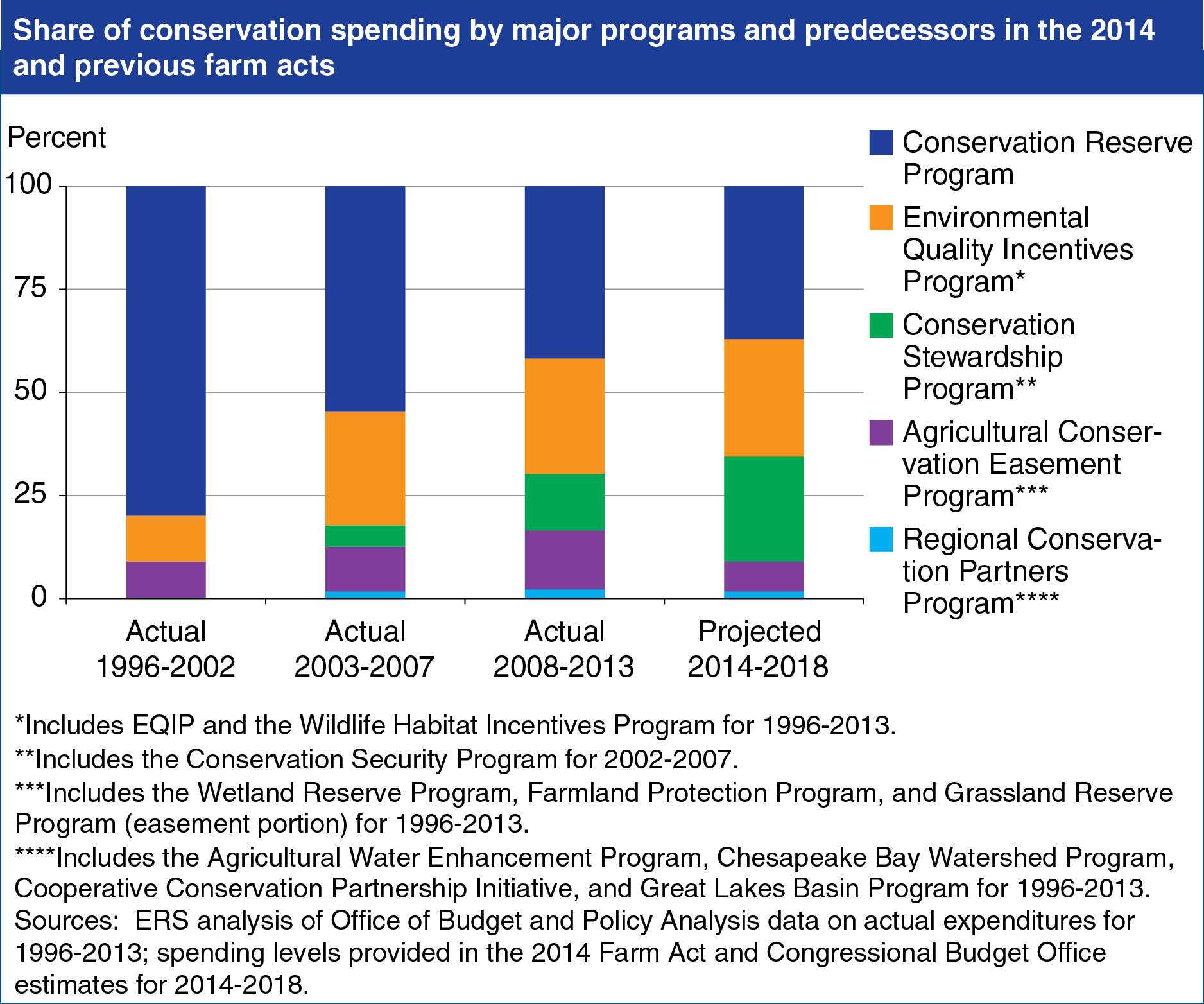Funding for conservation shifts towards working land conservation under the Agricultural Act of 2014
- by Roger Claassen
- 3/19/2014

Between 2014 and 2018, the Agricultural Act of 2014 calls for mandatory spending on USDA conservation programs to decline by $200 million, or less than one percent of the $28 billion (for the entire 5 year period) that the Congressional Budget Office projects would have been spent if the 2008 Farm Act had continued through 2018. However, funding will shift from land retirement and conservation easement programs (e.g., Conservation Reserve Program (CRP) and the Agricultural Conservation Easement Program and predecessors) to working land conservation programs (the Environmental Quality Improvement Program (EQIP) and Conservation Stewardship Program (CSP)). Combined funding for EQIP and CSP is projected to account for more than 50 percent of conservation spending during 2014-2018. These programs (and predecessors) accounted for just over 40 percent of spending during 2008-2013 and 32 percent during 2003-2007. Although CSP funding will be higher during 2014-2018 than during 2008-2013, a large share will go to servicing CSP contracts signed during 2008-2012. Under the 2014 Farm Act, USDA can enroll up to 10 million acres per year, down from 12.789 million acres per year under the 2008 Farm Act (2008-2012). This chart is found in the ERS analysis of 2014 Agricultural Act Impacts.

